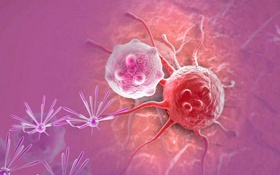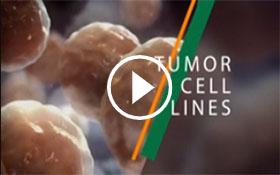Home > Products > Tumor Cell Lines >
Tumor Cell Lines


Tumor cell lines, also called Cancer cell lines, are an important part of tumors, they are the main component of tumors and tissue specific. Cancer cells have three important basic characteristics: immortality, migration, and loss of contact inhibition. In addition, carcinoma cells have many physiological, biochemical, and morphological characteristics that are different from normal cells. Different cancer cell lines provide a wide range of experimental materials for studying the occurrence and development of tumors and have played an important role in the in-depth study of tumor immunotherapy, tumor-targeted therapy, and tumor resistance.
AcceGen provides 1,387 kinds of carcinoma cell lines from human and animals, click on the selected item to view the products:
| Cat.# | Name | Description | Price |
|---|---|---|---|
| ABC-TC0112 | Calu-6 | Calu-6 is a human lung adenocarcinoma cell line that originated from lung metastasis in lung adenoca...more | +inquiry |
| ABC-TC0110 | Calu-1 | Human Caucasian lung epidermoid carcinoma. Derived from a 47 year old Caucasian male with an epiderm...more | +inquiry |
| ABC-TC0108 | CAL-54 | Established from the malignant pleural effusion of a 75-year-old man with kidney carcinoma in 1987. ...more | +inquiry |
| ABC-TC0107 | CAKI-2 | Established from the primary renal carcinoma of a 69-year-old man. ...more | +inquiry |
| ABC-TC0106 | Caki-1 | Ultrastructural features include many microvilli, few filaments, many small mitochondria, well devel...more | +inquiry |
| ABC-TC0104 | CADO-ES1 | Established from the malignant pleural effusion from a 19-year-old Japanese woman diagnosed with rig...more | +inquiry |
| ABC-TC0103 | CaD2 | In vitro established form the CaD2 carcinoma, tested and found negative for MAP-test.The species was...more | +inquiry |
| ABC-TC0102 | Caco-2 | Caco-2 is a human epithelial cell line derived from colon carcinoma. It exhibits characteristics sim...more | +inquiry |
| ABC-TC0101 | CA46 | Human Burkitt’s Lymphoma. Derived from ascites fluid of a patient with Burkitt’s Lymphoma. The cells...more | +inquiry |
| ABC-TC0099 | C6 | The C6 cell line, originating from a Wistar-Furth rat glioma induced by N-nitrosomethylurea exposure...more | +inquiry |
| ABC-TC0098 | C-4I | Human Caucasian Cervical carcinoma. Established from a cervical carcinoma of a 41 year old Caucasian...more | +inquiry |
| ABC-TC0097 | C-4 II | The C-4 II cell line is derived from a 41-year-old Caucasian female with cervical carcinoma. These c...more | +inquiry |
| ABC-TC0096 | C3H/10T1/2,Clone 8 | Contact sensitive; No detectable background spontaneous transformation; Highly susceptible to transf...more | +inquiry |
| ABC-TC0095 | C3A | C3A, also referred to as HepG2/C3A, is a epithelial-like clonal variant derived from Hep G2, origina...more | +inquiry |
| ABC-TC0094 | C-33 A | The C-33 A cell line is one of a series of lines derived by N. Auersperg from cervical cancer biopsi...more | +inquiry |
| ABC-TC0093 | C32TG | Amelanotic melanoma, 2-Amino-6-purinethiol-resistant. ...more | +inquiry |
| ABC-TC0092 | C32 (melanoma) | Human amelanotic melanoma. C32 belongs to the C32r type cultures with the marker M2r substituting th...more | +inquiry |
| ABC-TC0091 | C2C12 | C2C12 is a spontaneously immortalized murine myoblasts cell line derived from mouse skeletal muscle....more | +inquiry |
| ABC-TC0090 | C127I | Mouse RIII mammary tumour. Non-transformed clone from a RIII mouse. Supernatant fluid is negative fo...more | +inquiry |
| ABC-TC0089 | BxPC-3 | The cell line was derived from a 61 year old female with a primary adenocarcinoma of the pancreas. ...more | +inquiry |





